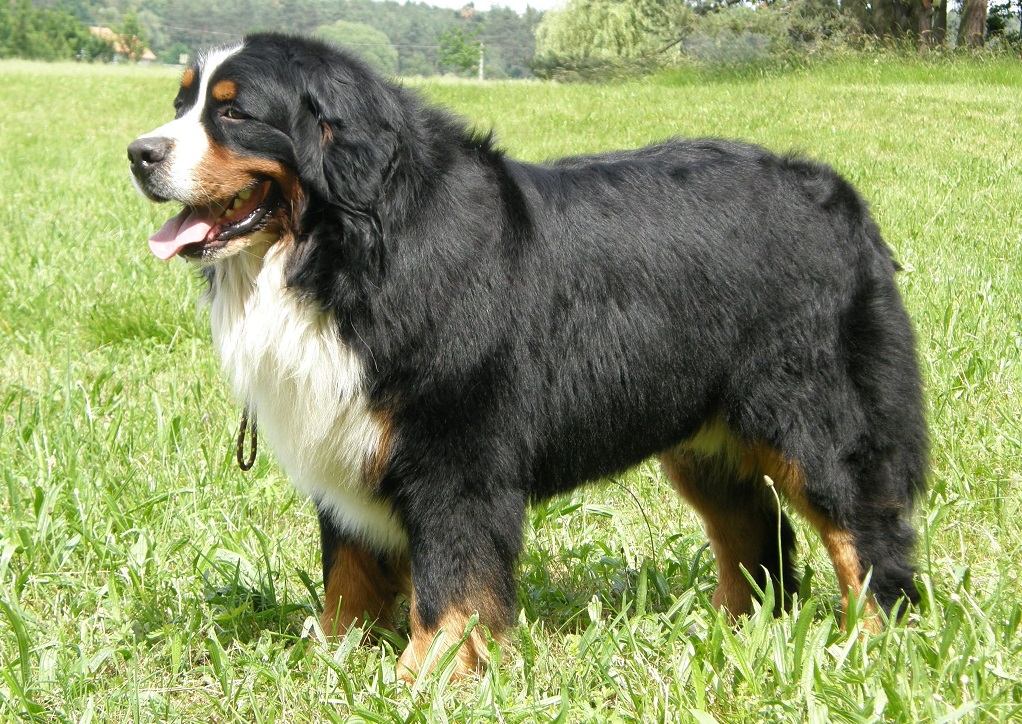
Bernese Mountain Dog

Navigate through the tabs
Navigate through the tabs below to view the breed's info of your interest.
The breed's info is divided in four sections; namely:
the breed's history ,
the breed's main stats ,
the dog's potential health issues
and finally, how the breed scored in 26 different categories.
All the above information should give you a respectively good overview for the dog of your interest.
Dog Breed's Main Info
The Breed's History:
The breed was used as an all purpose farm dog for guarding property and to drive dairy cattle long distances from the farm to the alpine pastures. The type was originally called the Durrbachler, for a small town (Durrbach) where the large dogs were especially frequent.
In the early 1900s, fanciers exhibited the few examples of the large dogs at shows in Berne, and in 1907 a few breeders from the Burgdorf region founded the first breed club, the Schweizerische Durrbach-Klub, and wrote the first Standard which defined the dogs as a separate breed.
By 1910, there were already 107 registered members of the breed. There is a photo of a working Bernese Mountain Dog, dated 1905 at the Fumee Fall rest area in Quinnesec, MI.
In the US, the Bernese Mountain Dog is growing in popularity, ranking in 32nd place by the American Kennel Club in 2013.
Country of Origin:
Switzerland
Breed Group:
Working
Height:
1 foot, 11 inches to 2 feet, 3 inch. (58,42 to 68,58 cm)
Weight:
70 to 115 pounds (31,75 to 52,17 Kg)
Life Span:
6 to 8 years
Potential Health Issues:
Cancer,
Elbow Dysplasia,
Progressive Retinal Atrophy (PRA),
Portosystemic Shunt (PSS),
Von Willebrand's Disease,
Panosteitis,
Gastric Torsion,
Hip Dysplasia
Adaptability
Apartment Living:
First Time Owners:
Sensitivity:
Being Alone:
Cold Weather:
Hot Weather:
Friendliness
Affection With Family:
With Kids:
With Dogs:
With Strangers:
Health and Grooming
Shedding:
Drooling:
Easy To Groom:
Overall Health:
Weight Gain Potential:
Size:
Training
Easiness:
Intelligence:
Mouthiness:
Prey Drive:
Barking or Howling:
Wanderlust:
Need For Exercise
Energy Level:
Intensity:
Exercise Needs:
Playfulness:
Our Mobile Application
Check out Our Mobile Application "Dog Breeds Central"
